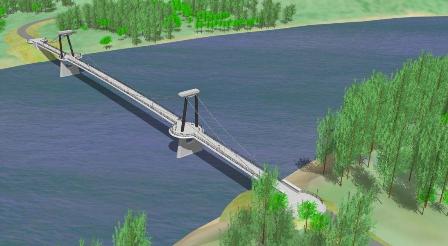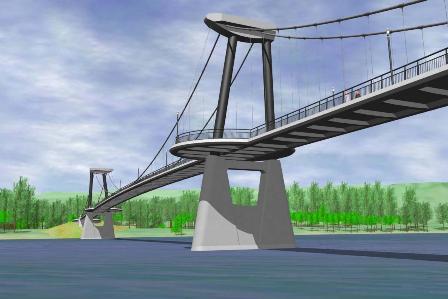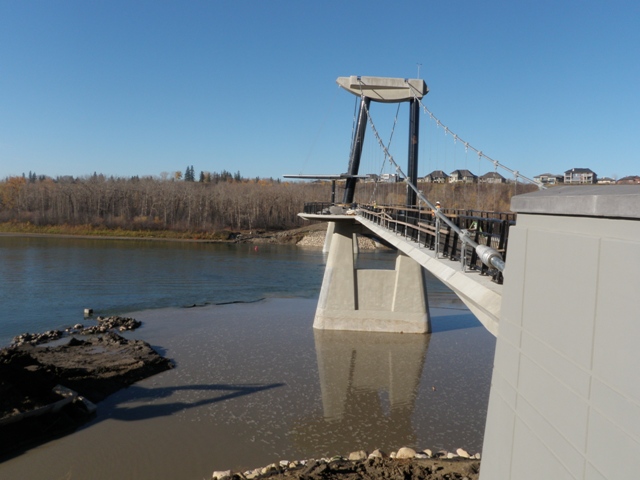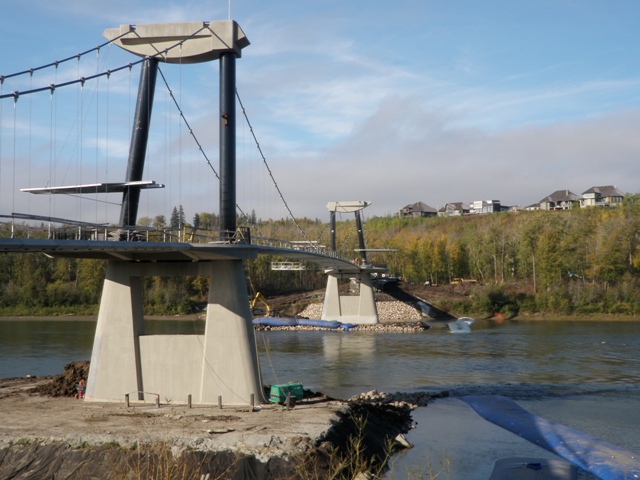

Project Background
Edmonton City Council approved the Fort Edmonton Footbridge project within the Ribbon of Green Concept (1990) and Ribbon of Green Master Plan (1992) documents. It further supported completion of the River Valley Plan in the Community Services Integrated Services Strategy (2000), the Urban Parks Management Plan (2006), and the Capital Region River Valley Park – Plan of Action (2007) prepared by the River Valley Alliance.
Growth in the southwest and west end communities is anticipated to create demands from an additional 143,000 residents in the next 10 years. This growth is contributing to an increasing demand for access to recreation services and facilities in the river valley park system.
The importance of trails and footbridges within the river valley was confirmed in a city-wide telephone survey (City of Edmonton; 2005). In this survey 85% of park users stated continuous trails and footbridges were very important to their enjoyment of the river valley. Public Consultation on this project included interviews with residents and key stakeholders, an information mail-out and survey, information and a survey on the City website, and two open house meetings with the communities near the footbridge. Public feedback on the project was very positive and is summarized in the following themes:
- Bridge design comments were predominantly supportive.
- General comments expressing support for the project and congratulating the project team for a job well done.
- Encouragement to get the project underway and completed as soon as possible.
- Parking in residential areas is a concern and should be monitored.
- Stairs and access to the river valley should be improved where possible while still preserving the natural environment.
The footbridge crosses the North Saskatchewan River upstream of Fort Edmonton Park and affords a connection between the new multi-use Trans Canada Trail around Fort Edmonton Park and new park land purchased on the west side of the river (Centennial Lands) in 2007. The Fort Edmonton Footbridge will enhance Edmonton's extensive trail system by creating a key link between the north and south sides of the river. Trail connections will be improved to access the footbridge and to connect future trails leading south to the city limits and south through the Capital Region.








